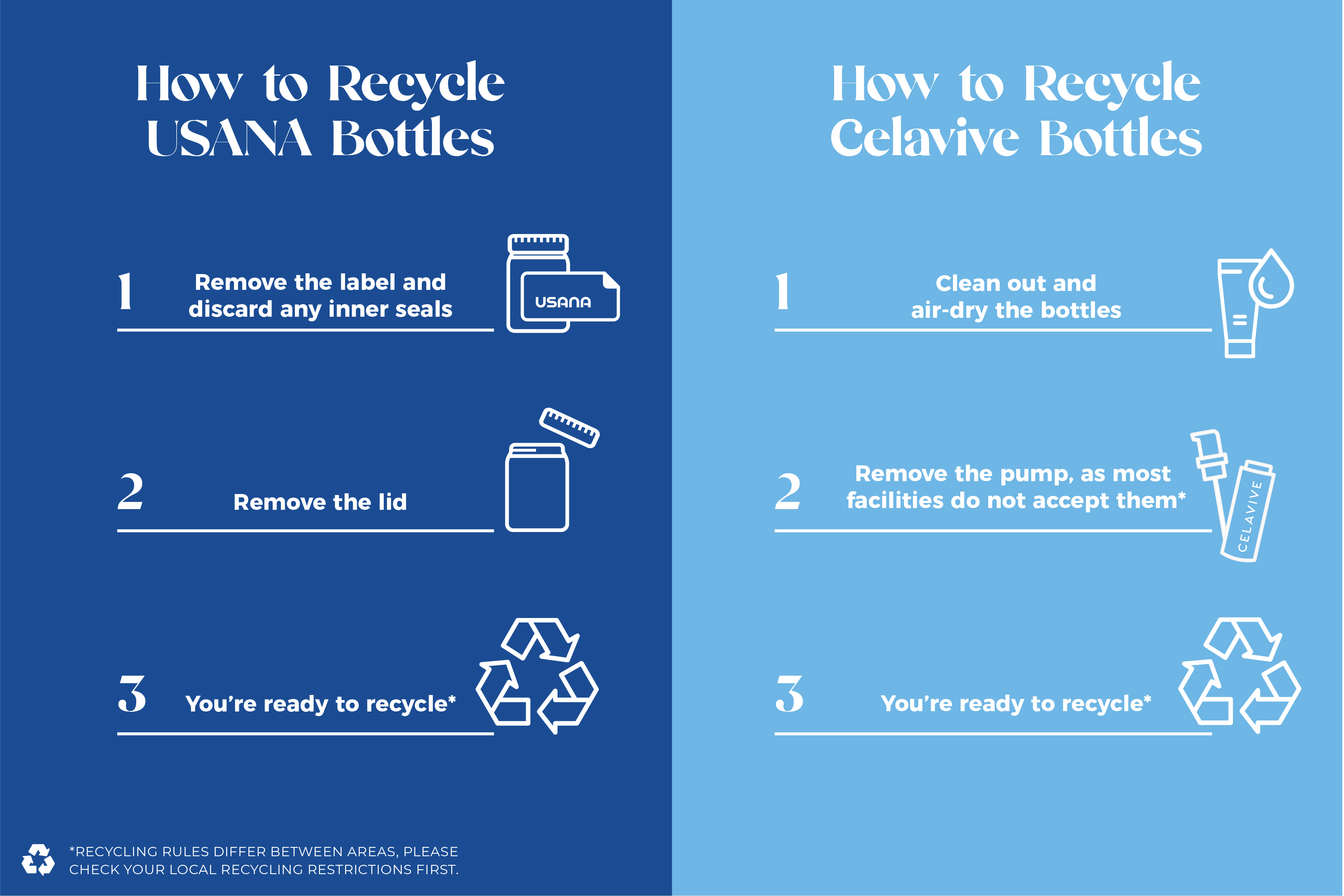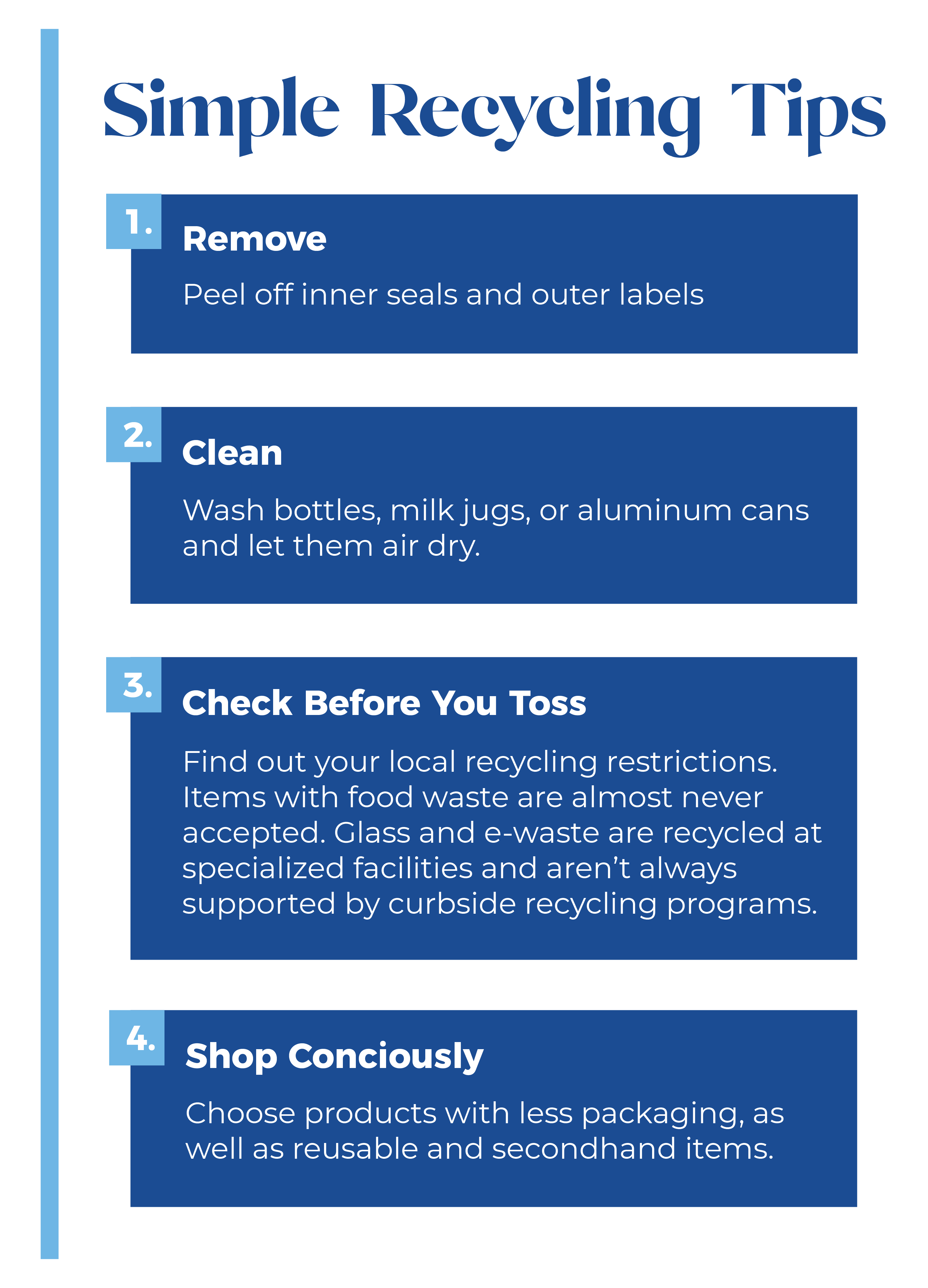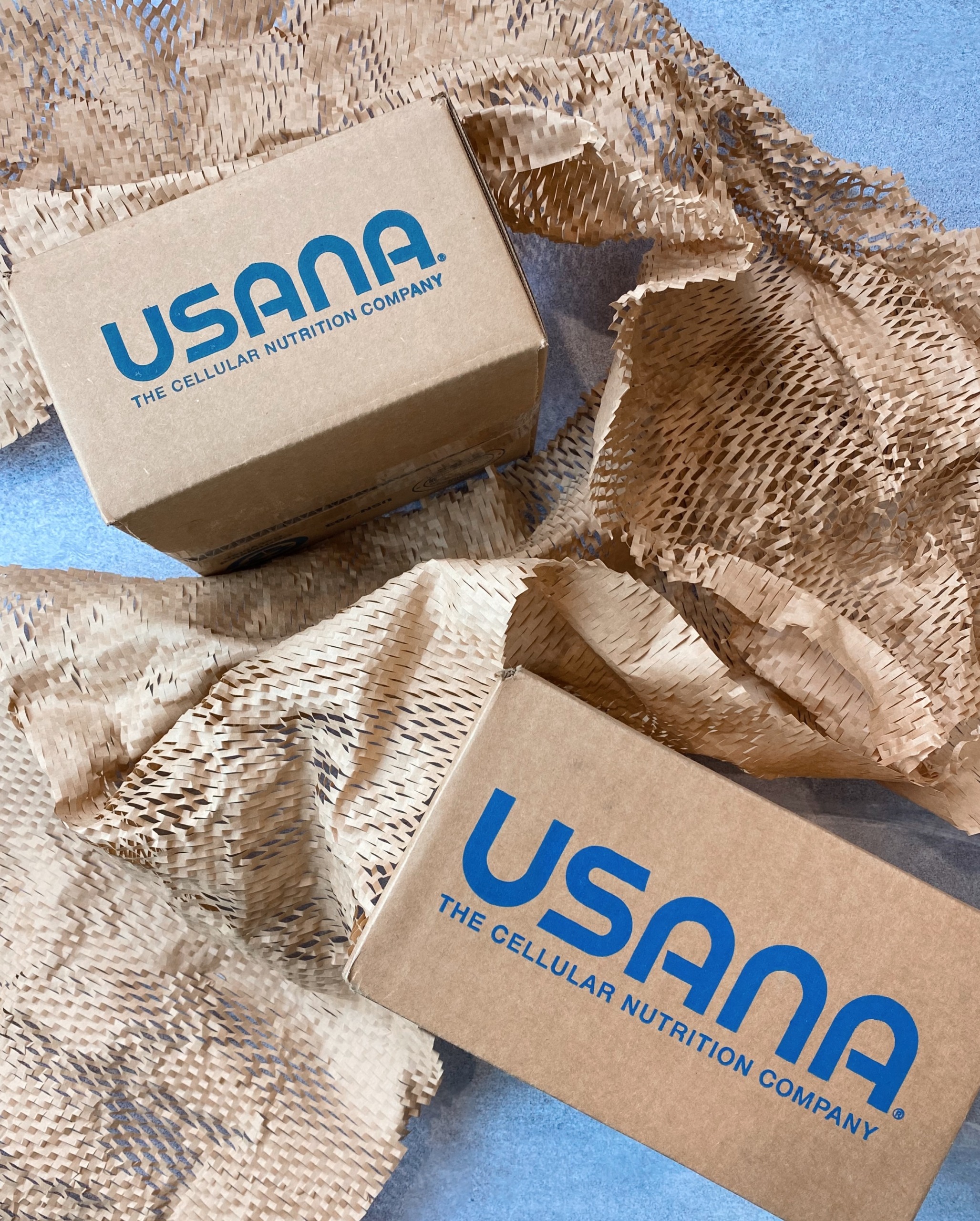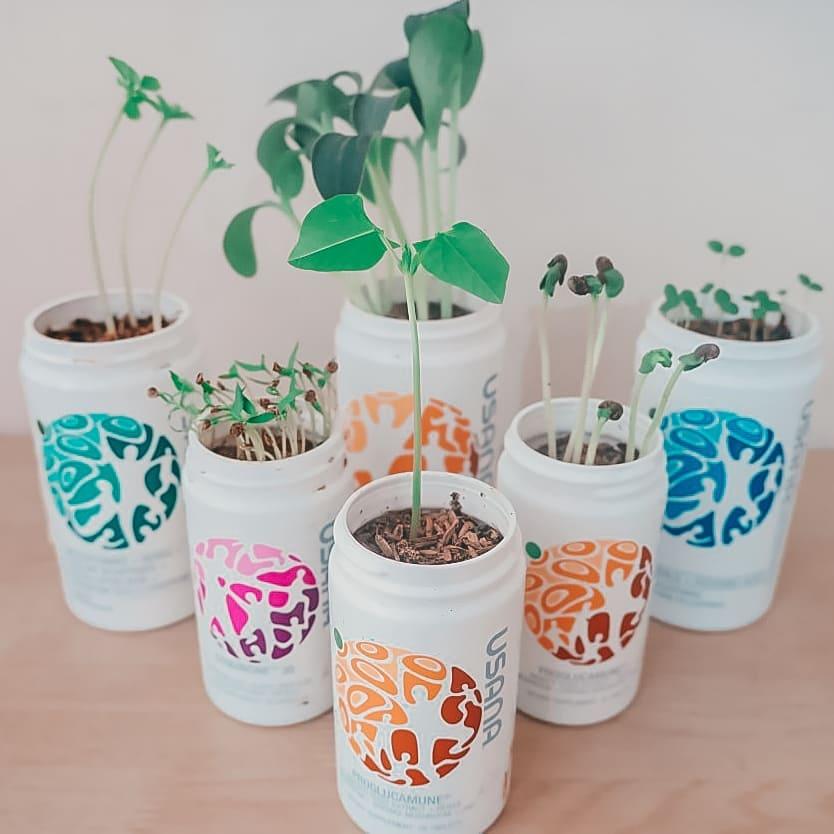How to Recycle USANA Products
Supplement Bottles Designed to Recycle
USANA’s products are smartly designed, packaged, and sealed so you can feel confident in their purity and quality. And those new 25% PCR bottles don’t just look cool—they’re recyclable, too. When it comes to recycling, little changes can make a big difference. Whether you’re a seasoned pro or just getting a recycling program in your area, here are a few great tips to recycle USANA products and nearly anything else.
Conscious Shopping
The less waste to recycle, the better. This mindset shift is key to living a sustainable lifestyle—you control the waste you create and what you do with it. Choose “less packaging” when prompted while ordering online. Opt for reusable shopping bags, food containers, straws, or food wrap. Buy secondhand and donate to secondhand stores—especially when shopping for or clearing out clothing.
Recycling USANA Products is Easy
USANA’s supplement and skincare bottles are simple to recycle. And though they’ve always been recyclable, our redesigned bottles are made from 25% PCR (post-consumer recycled) materials and are smaller for less wasted space.

| How to Recycle USANA Bottles | How to Recycle Celavive Skincare Bottles |
| 1. Remove the label, discard any inner seals | 1. Clean out and air-dry the bottles |
| 2. Separate the lid from the container | 2. Remove the pump, as most recycling facilities do not accept them |
| 3. Recycle! | 3. Recycle! |
Recycling Packing Materials
Recycle the cardboard shipping box your product arrived in by breaking it down and flattening it before placing it in the recycle bin. Toss the HexaFil paper filler or similar recyclable materials in the recycle bin, too. If your package contains foam packing peanuts or bubble wrap, these unfortunately can’t be recycled in most areas.
Recycling rules differ between areas, so please check your local recycling restrictions.
Recyclable Versus Biodegradable
Many manufacturers are making their once non-recyclable foam or plastic products biodegradable to help balance out waste production. You may have seen an uptick in new messaging or labels with “Biodegradable in four years” on items like Styrofoam drink cups, plastic bottles, or packing materials. It’s tough to know the difference between all these green buzz words, so let’s break it down.
Recyclable: This item can be recycled or reprocessed and used again, often to recreate the original item. Think recycle, reuse, repeat.
Biodegradable: This item can be broken down by living things (usually microorganisms in the earth) and be completely composted.
With more recycling knowledge, it’s easier to fit sustainable habits into your daily lifestyle.
Recycling Dos and Don’ts
| Do Recycle | Don’t Recycle |
| Paper (stationary, office paper, mail, newspapers) | Used paper products (paper plates, tissues, paper towels, wipes) |
| Cardboard boxes | Styrofoam takeout containers |
| Cardboard food packaging (frozen food boxes, liquid protein or drinks) | Pizza boxes |
| Plastic bottles or aluminum cans (cleaned out and labels removed) | Anything with a double liner or foil (some protein powder bags or snack bar wrappers) |
| Glass bottles | Mixed plastics |
| Clean and empty skincare and supplement bottles (varies by brand) | Bubble wrap, packing foam pieces, or plastic grocery bags are recycled at very few facilities |
Small Choices, Big Difference
Our shipping and manufacturing processes focus on conserving paper and cardboard and recycling the rest, while limiting plastic waste. We’re always looking toward a greener future and have teams dedicated to discovering new, environmentally friendly options for our products and business. At USANA, we’re taking a stand for greener actions that will spread across the globe—and we invite you to join us. Small choices—like recycling—can bring big changes to your city and the world around you. Let’s build a better future together.




Leave a Reply
Want to join the discussion?Feel free to contribute!